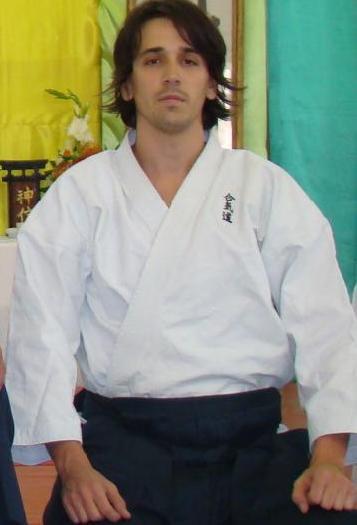Seiza
Seiza (Japanese: 正座, literally "proper sitting") is the traditional Japanese way of sitting on one's knees, a common posture in Zen meditation, martial arts, and traditional Japanese events. It involves sitting on the lower legs which are folded underneath the thighs, while the buttocks rest on the heels. This position is often used in various ceremonies, such as tea ceremonies (chado or sado) and in traditional arts, including Ikebana (flower arranging) and shodo (calligraphy).
Etymology[edit | edit source]
The term seiza is derived from two Japanese words: sei (正), meaning "correct" or "proper," and za (座), meaning "sitting." Thus, seiza translates to "proper sitting." This reflects the cultural emphasis on etiquette and formality in Japan, especially in traditional settings.
History[edit | edit source]
The practice of seiza has its roots in the Muromachi period (1336–1573), where it became the standard way of sitting in Japanese society. Before this period, various sitting styles were prevalent, including agura (cross-legged sitting) and tatehiza (one knee raised). The adoption of seiza was part of a broader cultural shift towards more formalized manners and etiquette during the Muromachi period.
Posture and Technique[edit | edit source]
To sit in seiza, one must first kneel on the floor, folding their legs underneath their thighs, with the feet flat on the floor and the big toes overlapping slightly. The buttocks then rest on the heels, and the back is kept straight. Hands are placed on the thighs with palms down, or in formal settings, folded in the lap. Maintaining this posture requires flexibility in the ankles, knees, and hips, and can be uncomfortable for beginners or those not accustomed to it.
Cultural Significance[edit | edit source]
Seiza is more than just a way of sitting; it embodies the Japanese cultural values of respect, humility, and discipline. It is a posture that is closely associated with the samurai class and the martial virtues of patience and endurance. In traditional arts and ceremonies, seiza is considered the proper way to sit, as it promotes a calm and focused state, conducive to meditation and mindful practice.
Health and Comfort[edit | edit source]
While seiza is a symbol of traditional Japanese culture, sitting in this position for extended periods can be challenging, especially for those not used to it. It can lead to discomfort or numbness in the legs due to reduced blood flow. To alleviate discomfort, special cushions called zabuton are often used, and there are also seiza benches designed to support the buttocks while keeping the legs folded underneath.
Modern Usage[edit | edit source]
Today, seiza remains an integral part of traditional Japanese ceremonies and practices. However, its use in everyday life has diminished, with Western-style chairs and seating becoming more common in Japanese homes and workplaces. Despite this, seiza continues to be taught and practiced, particularly in martial arts dojos and in schools where traditional Japanese arts are taught.
See Also[edit | edit source]
Navigation: Wellness - Encyclopedia - Health topics - Disease Index - Drugs - World Directory - Gray's Anatomy - Keto diet - Recipes
Search WikiMD
Ad.Tired of being Overweight? Try W8MD's physician weight loss program.
Semaglutide (Ozempic / Wegovy and Tirzepatide (Mounjaro / Zepbound) available.
Advertise on WikiMD
WikiMD is not a substitute for professional medical advice. See full disclaimer.
Credits:Most images are courtesy of Wikimedia commons, and templates Wikipedia, licensed under CC BY SA or similar.Contributors: Prab R. Tumpati, MD

